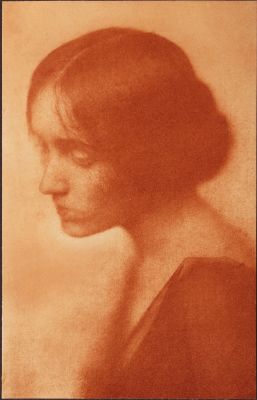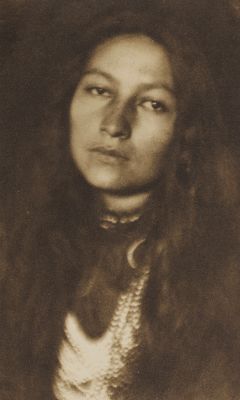
Title
Intervale, WinterArtist
Post, W.B. (American, 1857-1925)Publication
Camera Notes Vol. 5 No. 1Date
1901Process
PhotogravureAtelier
Photochrome Engraving Company, New YorkImage Size
12.8 x 16.5 cm
Practicing the art of elimination, pictorialists learned quickly that the less there was in their pictures, the better their images usually looked. Hartmann (Sadakichi Hartmann, leading art critic), who complimented Stieglitz by calling him a fanatic of simplicity, was equally impressed by the understated works of William B. Post, a leading member of the Camera Club of New York known for his poetic photographs of water lilies and snow scenes. Probably speaking of Intervale, Winter, Hartmann exclaimed: I know of nothing more exquisite in recent landscape photography than that picture where a straight line at the horizon separates the stretch of snow from the depleted vegetation in the distance and the sky. Its simplicity is astonishing. It almost seems like an insult to Dame Nature that she can be expressed in terms of such simplicity, but it should be accounted rather as a virtue than a shortcoming that the artist can see nature so simply and in such a sound attitude of mind. With simplicity as their keynote, pictorialists emptied their pictures of material and filled them with meaning. [1]
Reproduced / Exhibited
Davis, Keith F. An American Century of Photography: From Dry Plate to Digital. Kansas City, Mo: Hallmark Cards, 1999. Print. p. 91
Homer, William I, Catherine Johnson, and Alfred Stieglitz. Stieglitz and the Photo-Secession, 1902. London: Penguin Putnam, 2002.
Kruse, Margret. Kunstphotographie Um 1900: D. Sammlung Ernst Juhl; Hamburg: Museum für Kunst u. Gewerbe, 1989 pl. 800
References
[1] Peterson Christian A et al. Alfred Stieglitz’s Camera Notes. 1st ed. Published by the Minneapolis Institute of Arts in Association with W.W. Norton 1993.



